Intro to Diving: My First and Definitely Not Last Scuba Diving Experience
Scuba diving.
What comes to your mind when you hear about this sport?
Expensive.
Difficult.
Scary.
That’s understandable. It’s what I thought before I tried it.
Scuba diving is often thought of as expensive, especially compared to other activities like island hopping or even mountain climbing.
It’s also scary. When I ask friends to go on a beginner’s dive with me, their first excuse is always, “I can’t swim!”
![]()
Table of Contents
We’re Missing Out!
People from all over the world visit the Philippines to see our diverse marine life. Yet very few Filipinos experience it to the fullest.
Sure, snorkeling and helmet diving gives you a glimpse of different fishes and corals. But both activities are worlds apart when compared to the freedom of movement diving gives you.
When I was scuba diving, I felt one with the sea. Because of the equipment used, I could breathe underwater and swim like a mermaid—unhindered by the lack of oxygen or currents underneath the surface.
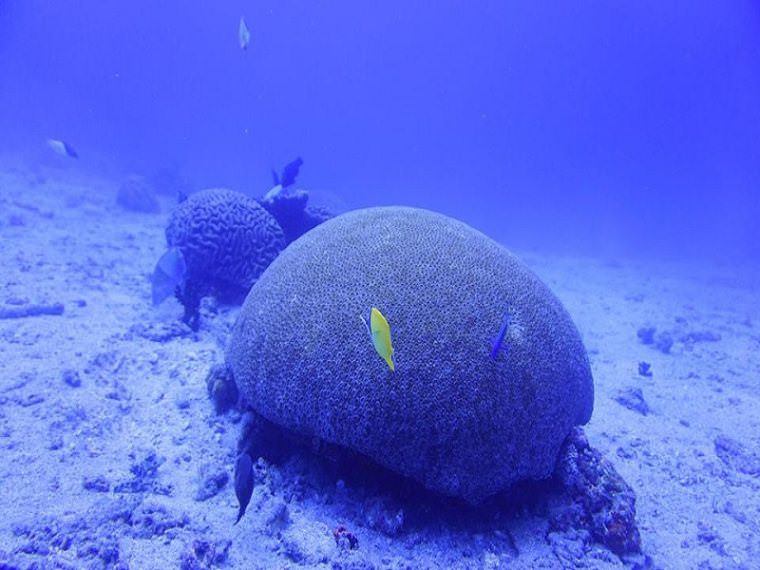 In this article, I’ll share my story as a newbie diver, including what I learned on my discover scuba diving experience (DSD), and where to find affordable scuba diving packages.
In this article, I’ll share my story as a newbie diver, including what I learned on my discover scuba diving experience (DSD), and where to find affordable scuba diving packages.
![]()
What to Expect on Your First Dive
If you think learning how to dive is hard, don’t worry. New scuba divers aren’t expected to assemble equipment and jump of the boat on their first dive.
In fact, everything is taught in several steps:
- Video lesson: First time divers watch a video explaining the basics of scuba diving, including a rundown of the equipment used and some of the skills they’ll learn on an intro dive or DSD.
- Equipment and Skills Demonstration: You’ll get a close look at all the equipment you saw on the video. The instructor will show you how to assemble the gear, how to use them, and basic hand signals to communicate underwater. Warning: information overload!
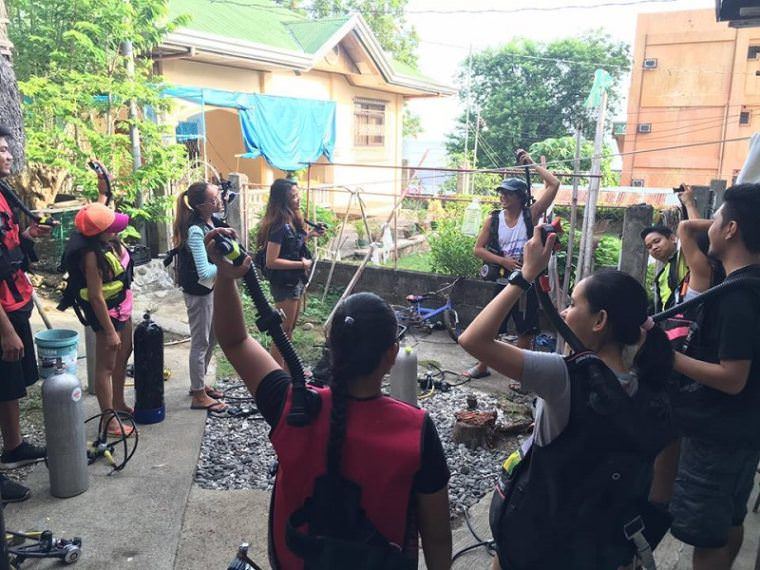
- Skills Test in a Pool or Shallow Water: This practical lesson ensures you understood all the equipment and lessons discussed during the demo. You’ll also learn what to do if you lose your breathing apparatus and get water in your mask. Don’t worry if you don’t get it right the first time because the instructors are there to provide feedback and assist you all the way.
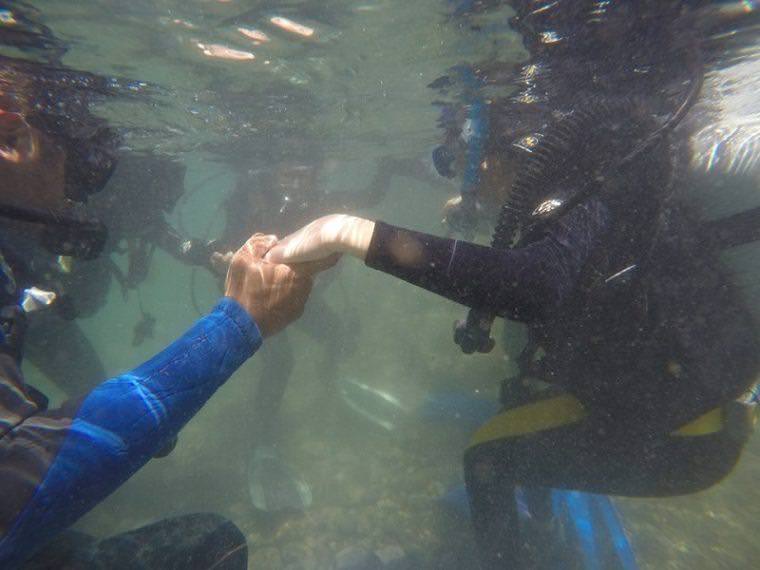
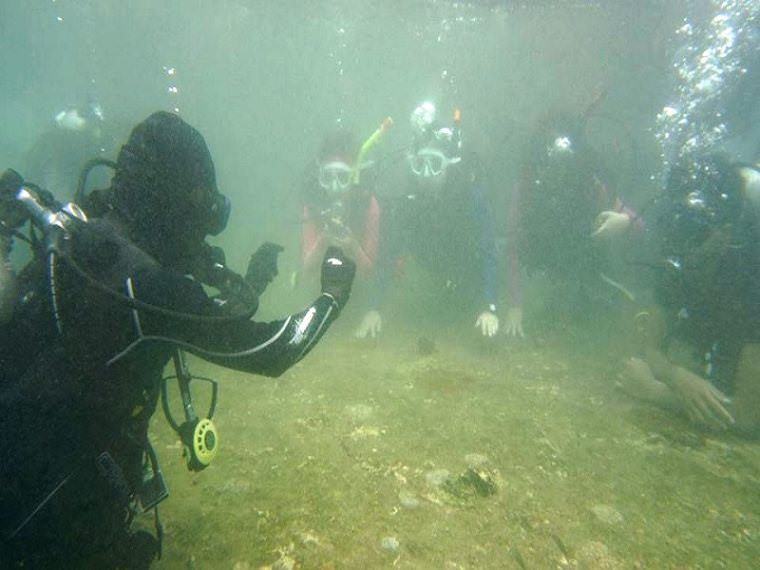
- Dive (10 meters maximum for beginners): Why just 10 meters? I think because it’s deep enough that you can see different corals and marine life, but still safe enough that it doesn’t take long to reach the surface. Also, diving beyond this requires another set of skills, which are often thought in CMAS open water certification courses.
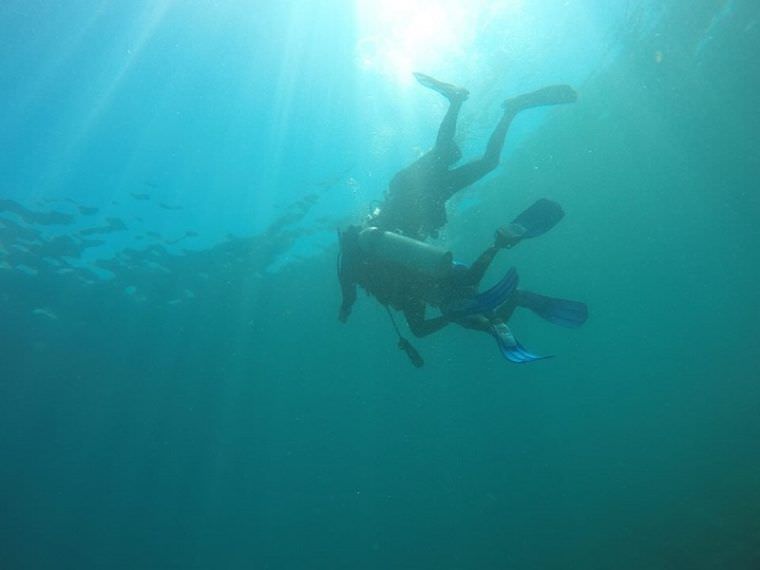
 Getting to Know a Scuba Diver’s Gear
Getting to Know a Scuba Diver’s Gear
You’ve seen scuba divers in movies, right? They wear suits, masks, and carry scuba air tanks on their backs. But it’s so much more than that.
If you’re scared of drowning or sinking, the equipment demonstration will put your mind at ease. Each item in a diver’s gear is there for a specific purpose—to keep you safe underwater. Redundancies are also built in for almost every problem you might encounter.
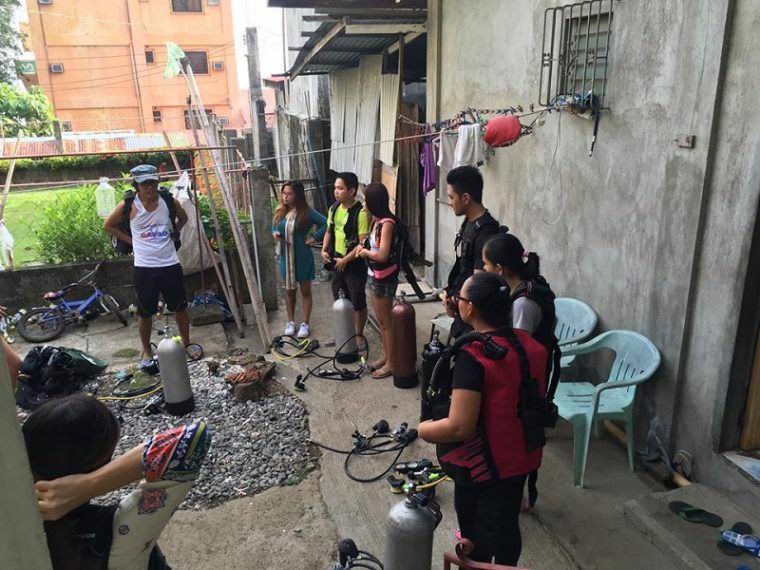
List of Scuba Diving Equipment:
1. Scuba Tank: Filled with 3000 PSI of compressed air—not oxygen—a common misconception about diving.
2. Buoyancy Control Device (BCD): Refers to the jacket divers wear to control their depth underwater. You press a button to float or descend. So don’t worry about drowning because the BCD also doubles as a floatation device in emergencies, although that’s not really one of its recommended uses.
3. Regulator: Attached to the top of the tank and connects to a hose that allows you to breathe underwater. It’s also connected to your alternate air source and BCD inflator.
4. Mask: Allows you to see underwater, while protecting your eyes and nose. I asked my instructor why we need to wear masks and not goggles. Apparently, goggles aren’t allowed in scuba diving because as you go deeper, the pressure underwater will build up and cause your eyes to pop.
I imagine this is similar to what happens in cartoons when their eyes pop out of the sockets, except its gross. Masks also have a space for your nose so you can equalize as you go deeper.
5. Dive booties: Worn with fins to make them snug.
6. Fins: Aids your leg muscles and feet in swimming, so you can cover great distances with minimal effort. Less effort, means less oxygen consumption, which means you can spend more time underwater.
7. Wet suit: Protects your body from cold temperature.
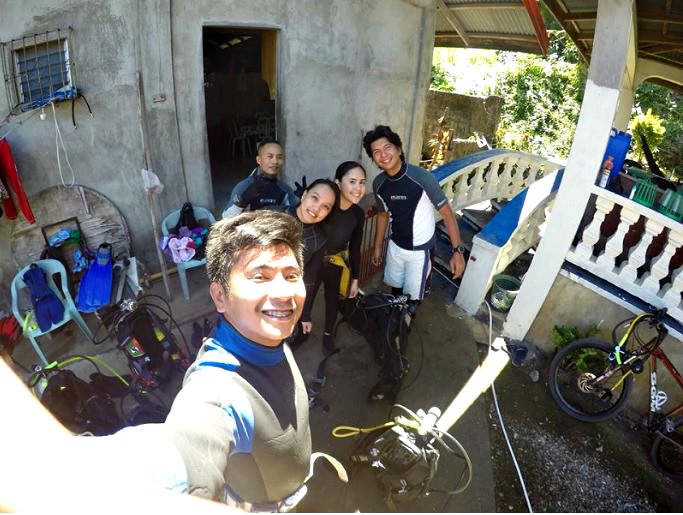
8. Weight belt: Your body is built to float, even if you think you can’t. That’s why divers wear weight belts to help them descend, and stay there while diving.
9. Alternate air source: a spare regulator used in case of emergency, or if you need to share air with your dive buddy.
10. Pressure gauge: It’s connected to your tank and indicates how much air is left.
 Basic Hand Signals
Basic Hand Signals
Scuba divers communicate through hand signals. We were only taught the basics, but I later found out there are probably ten more signals, one for almost every situation imaginable. I guess that’s to prevent new divers from getting overwhelmed.
Here’s a list of the basic hand signals you can expect to learn on your first scuba diving experience:
1. “Okay”
The first signal they’ll teach you. It’s a ‘demand-response’ signal, which means you’re required to signal back with the appropriate response. For instance, if another diver gives you the “okay”
sign, they’re asking if you’re okay. And you need to signal either “okay” back or the signal for something is wrong.
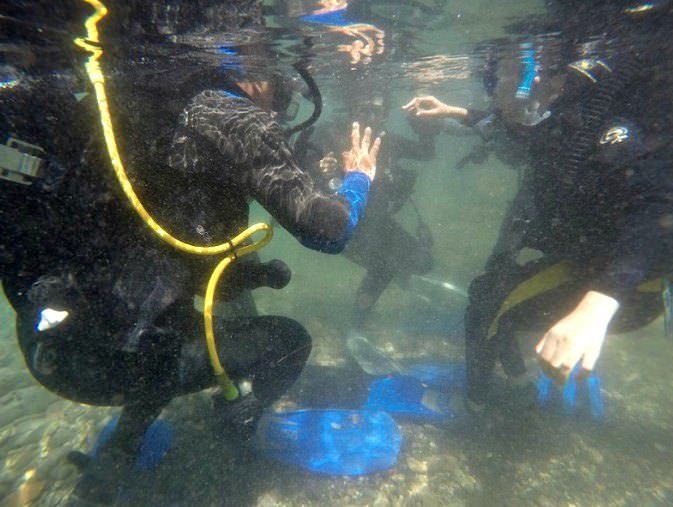
2. Something is Wrong (aka So-So)
Palms down, half rotating or swinging the hand from left to right to signal your dive buddy that you’re not well or comfortable. It’s the opposite of the “okay” sign. Divers are instructed to immediately stop what they’re doing and try to assist their dive buddy then wait for them to signal “okay” again.
3. Time Up
When your dive buddy forms a letter “T” with his two hands, that means he has already consumed half of his air supply, which means it’s time to turn around and begin the ascent to the surface.
4. Ascend
Made by pointing your thumbs up, and is often confused with the “okay” sign. When you see this signal, it means the dive session is done and it’s time to go back to the surface. It’s also a ‘demand-response’ signal, so you have to reply with a thumbs-up to acknowledge that you understood.
5. Descend
Thumbs down means it’s time to begin the dive and start descending. To descend, divers press a button on their BCD to start deflating their jacket. Here’s a picture of my friend Rose trying to descend by pressing the button on her BCD.
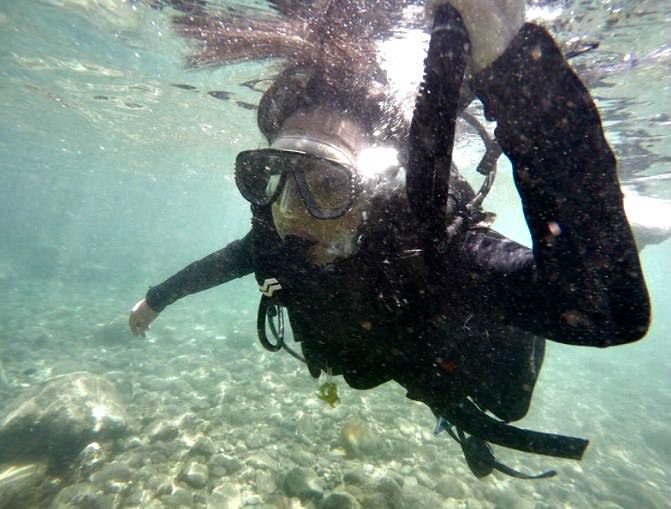
Licensed divers say the BCD isn’t an elevator to sink or float underwater because it’s harder to control how far you go up—or down. But for beginner’s guided closely by certified dive instructors, it’s easier to do it this way.
A controlled descent isn’t easy to master, on top of everything else we had to learn on our first dive.
6. Stop
Same signal we use on land. It’s a signal used to catch other diver’s attention, when they want to use other hand gestures, or show them something.
7. Out of Air
When you see someone move their hand across their throat ala ‘off with their heads,’ that means they’re out of air. It’s probably the most panic inducing signal you’ll encounter while diving.
But divers are trained for situations like this so I doubt they’ll panic. Besides, the chances of this happening are low because we were taught to check the tanks before diving.
 Going Under: What It’s Like to Breathe Underwater and Scuba Dive
Going Under: What It’s Like to Breathe Underwater and Scuba Dive
Now we’ve come to the fun part, the actual dive. Before I tell you about the skills I learned on my first dive, I want to set your expectations first when it comes to breathing underwater. It’s a weird sensation that takes a little getting used to, so this is just a heads up.
- It feels weird inhaling and exhaling with your mouth: Yes, your nose is protected by your mask. But water might leak in if you accidentally inhale or exhale through it. We’re so used to breathing through our nose that we don’t think about it. Changing gears, forcing you to inhale and exhale solely through your mouth takes practice.
Your throat might feel a little hoarse after your first dive, like what happened to me and my friends. It’s normal and just a temporary side effect of using your mouth to breathe.
- Exhaled air (bubbles) get in your face: When I exhaled, the bubbles would get in my face and partly block my mask’s line of vision in bubbles. I also felt like my mask was going to come off because of the bubbles. It didn’t happen though, that was just me being a little scared and paranoid. It’s not a major concern, but it was a bit disconcerting for me.
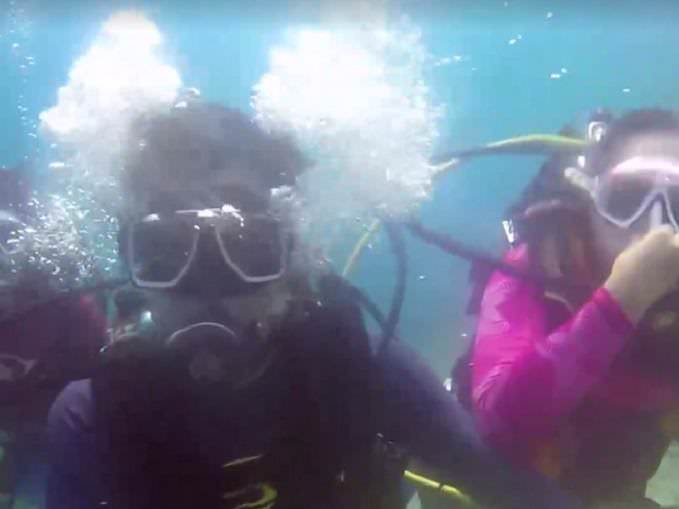
- Don’t hyperventilate:I don’t know about other divers but in my first dive I was exhaling a lot and generating a ton of bubbles. I heard that’s normal for beginners because they’re not used to breathing underwater yet, and as a result take frequent short breaths. I was asked to practice breathing deeply, and exhaling slowly, kinda like yoga.
- You might feel like you need to pee: Your body reacts to sudden drops in temperature by speeding up the process of urine a.k.a. cold water immersion diaresis. This will make you feel like you need to pee. Don’t hold it in, unless you’re practicing in a pool.
![]()
Underwater Skills You’ll Learn on Your First Dive
After you’ve assembled your equipment, worn your scuba gear, and learned some hand gestures, you’ll learn basic skills that will help you deal with some problems you might encounter underwater.
Not that I’m expecting you to have problems in your first dive. It’s just that in diving, they equip you with the skills you’ll need way before you might need them—as a safety precaution—to prevent panic attacks and accidents.
1. What to do when your ears hurt (Proper Equalization Techniques)
Ideally, you should equalize every 1 meter of descent and not just when your ears hurt. Don’t ignore this procedure, because failure to equalize can lead to damaged ear drums.
Different Equalization Techniques:
- Tonybee Maneuver: pinch your nostrils, close your mouth then swallow.
- Lowry Technique: Blow your nose and swallow at the same time, while pinching your nostrils.
2. What to do when water gets in your mask (Mask Clearing Method)
Water might get in your mask if you breathe through your nose, your hair gets inside the mask (girl problems), or it’s accidentally knocked off. Either way, you need to remove the water before you accidentally breathe it in, which was what happened to me when I first attempted to learn this.
Jun demonstrated this to our group then asked us to do it one by one. Here’s a picture of me letting water into my mask, so I can clear it and practice this skill.
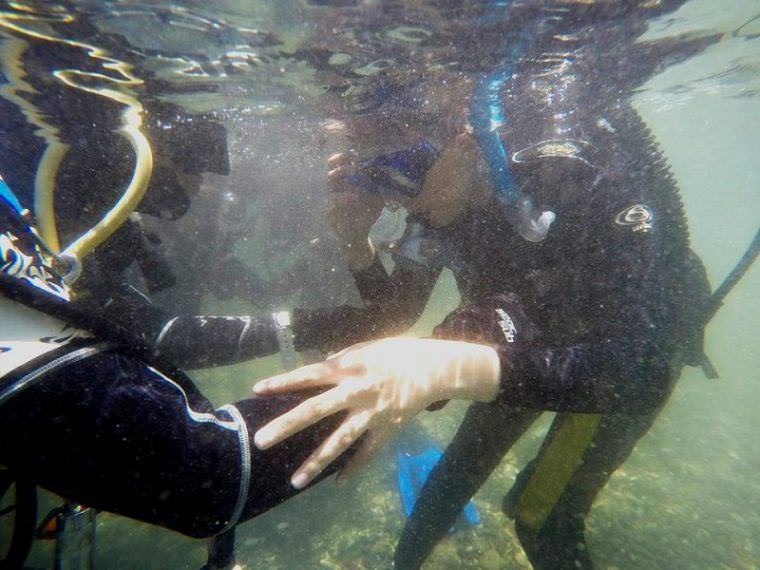 Once water seeps into your mask, take a moment to get used to the sensation of having water in it, breathing only with your mouth. This part of the process is important, so you don’t panic if this happens later on.
Once water seeps into your mask, take a moment to get used to the sensation of having water in it, breathing only with your mouth. This part of the process is important, so you don’t panic if this happens later on.
To clear the water, tilt your head up then press your palm firmly against the top part of the mask covering your forehead. Exhale hard through your nose to force the water out through the bottom of the mask. This skill might also come in handy when you’re snorkeling.
Sometimes, one exhalation isn’t enough so you’ll have to do it another time to remove any leftover water.
3. What to do if you lose your breathing apparatus (Regulator Recovery)
You’re diving, enjoying the sights and the fish swimming around you. All of a sudden, you see a turtle swimming towards you. You get startled—or you probably shouted after seeing such a magnificent creature—so your mouth relaxes and the regulator gets lose. Or maybe another diver accidentally knocked it off.
Although this rarely happens, it’s important to know how you can recover it. Otherwise you won’t be able to breathe!
In this skills-training exercise, divers are instructed to hold the mouthpiece of their regulator facing down, otherwise the air will escape. You’ll intentionally let go of your regulator—as if you lost hold of it.
The cardinal rule of scuba diving is never hold your breath, so your instructor will ask you to exhale a little bit to release a small flow of bubbles. Then lean towards your right and stretch your right hand in front of you. With a sweeping motion, move your extended right hand to the bottom of your scuba tank. Your regulator’s mouthpiece should now be in front of you, near your right hand. Pick it up and put it back in your mouth.
4. How to put the regulator back in your mouth without swallowing water (Regulator Clearing)
If you open your mouth to put the regulator mouthpiece back, you’ll inevitably swallow a little of water, right? The regulator might also have a bit of water in the mouthpiece.
No problem, just forcefully exhale the water through your mouth while wearing the regulator. That will remove all the water and you can start breathing normally again.
5. Proper Swimming
When swimming, we use both our hands and feet. In scuba diving, we were instructed to keep our hands steady—either arms folded across the chest, or clasped together while it’s extended forward.
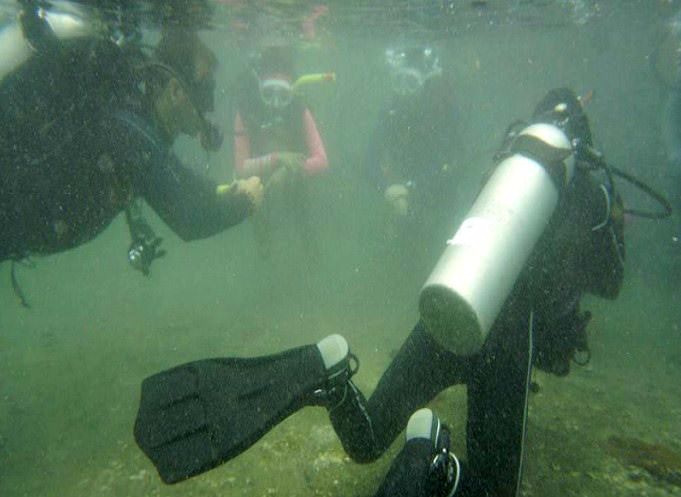
I was a bit puzzled when they asked us to do this. During the dive, however, I noticed that using my hands to swim, even a little bit, was tiring. It also altered my direction even if I didn’t want to.
A quick Google search revealed that there’s no strict position requirement, but there are ideal positions to minimize drag and discomfort.
![]()
Where to Go for Budgetarian Diving Trips
Anilao, Batangas (Bagalangit)
First place I recommend because it’s just a few hours from Metro Manila, and it’s where I experienced diving for the first time. First time I went there, I was with my co-workers and we went on an overnight trip, since my friend had a car.
Budget-wise, that wasn’t a good decision because lodgings in Bagalangit are expensive, ranging from 2,000 to 3,000 PHP a night per person including full-board meals. We tried to haggle with the hotels but it looks like the rates are pretty standard here and meals are always included. There are no restaurants or eateries in the immediate area.
With my friend Lionell’s contact, Jun Tarun of Juan Divers, we got a DSD package for 1,500 pesos including the equipment, lesson, and actual dive. The first dive can also count towards the required lessons to become a licensed diver.
You can also buy a dive book (100 PHP) where you can log your dives, and a certified instructor will stamp it. It’s totally optional btw, but it’s a good way to record the skills you’ve learned and how deep you went underwater. Plus, it’s evidence of your awesome bucket-list worthy diving experience.
If you want to go on a day-trip Jeru Cajapin, organizes round-trips from Manila to the exact same dive spot in Bagalangit for 2700 PHP all in. That includes the dive (1500 PHP), round-trip van transfer from Manila to Batangas and back, and lunch. Trip usually leaves at 3 AM Saturday and returns 5 PM or later, if you want to go on a food trip or drink with the gang.
Of course, if you have a car, you can go on a day trip, too. Leave manila by 4 or 5 AM and arrive in Bagalangit by 7-ish depending on the traffic. If you do the lessons and dive in the morning, you can leave by 1 or 2 PM and go on a side trip to Tagaytay.
Sabang, Puerto Galera
I don’t have first-hand experience diving in Sabang but I often hear it’s one of the best places to dive near Metro Manila. They say it’s a good place for night diving, especially during a full moon.
Since I don’t know any of the hotels or dive shops in this area, I asked Ehsan, a friend and experienced diver who frequents Sabang. He provided three options:
- Asia Divers: A top-rated beach hotel and PADI dive resort. Rooms start at $59 (2478 PHP) a night depending on the season, and the DSD package costs 3920.
- Captain Gregg’s: Ehsan said this is the best place for him. It’s the middle option with good rooms, service, and reasonable price. Rooms start at 1400 PHP minimum of two nights, while a DSD costs $70 (2940 PHP).
- Sea Rider: Not a hotel, just a dive center. According to Ehsan, this is one of the cheapest options available in Sabang. Their DSD costs $55 (2500 PHP).
Of course, as with anything travel related, prices change depending on the season so please contact them to get the best rates available.
 Let’s Dive!
Let’s Dive!
It’s been months since my Discover Scuba Diving experience, and I can’t wait to come back and get licensed! I’ve always harbored ambitions of becoming a real life mermaid (with pink hair), and this is the closest I can get to becoming one.
But even if you don’t have mermaid fantasies like me, I’m sure you’ll enjoy views like these and meeting new friends—in and out of water.
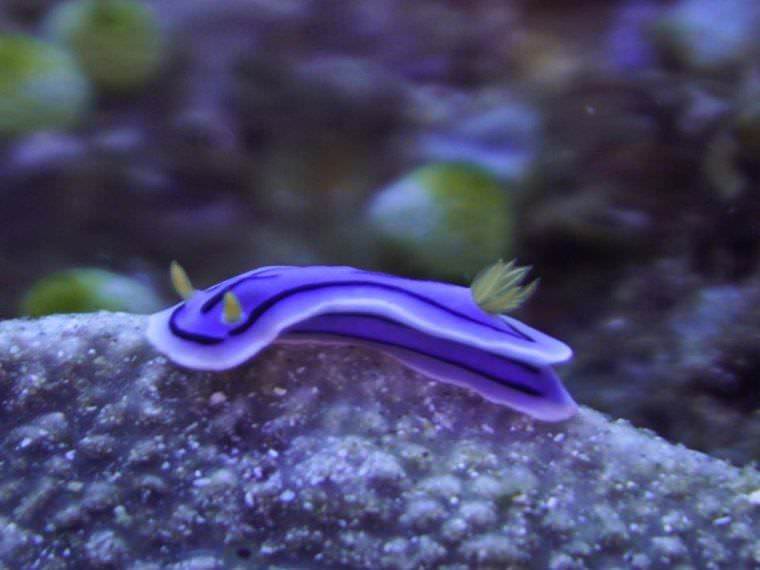
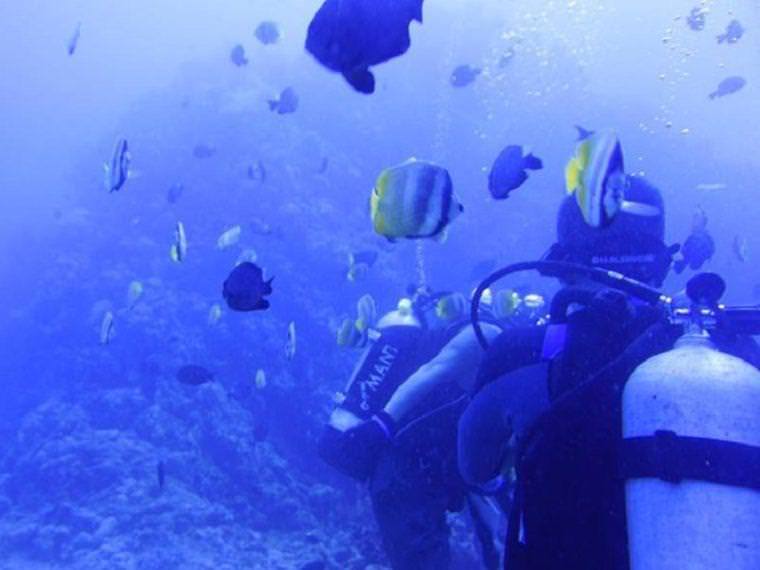
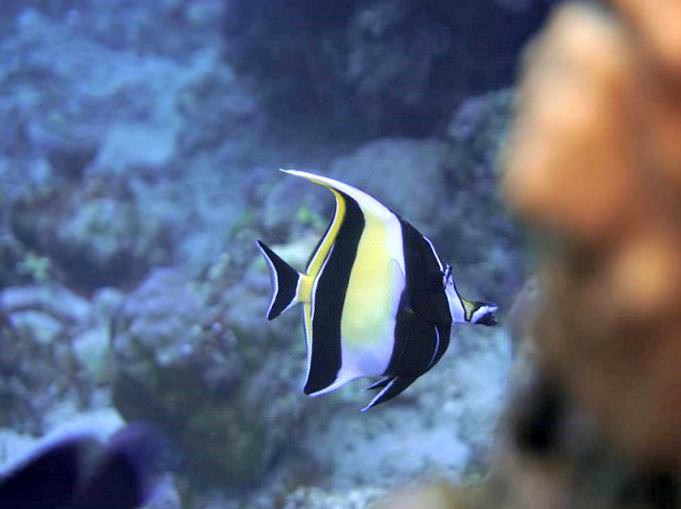
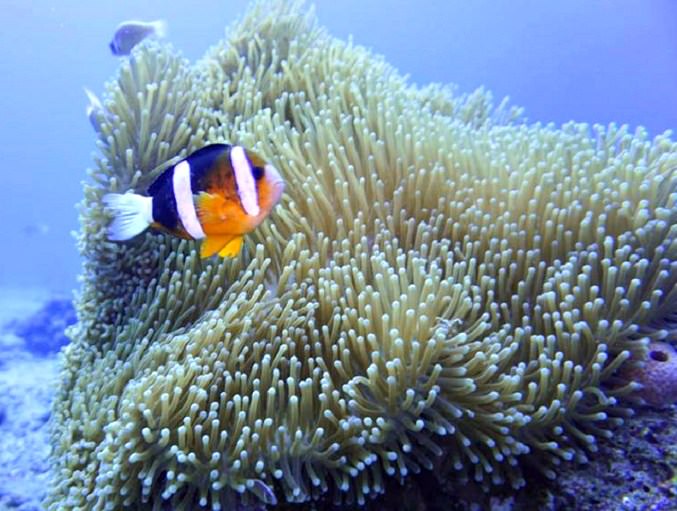
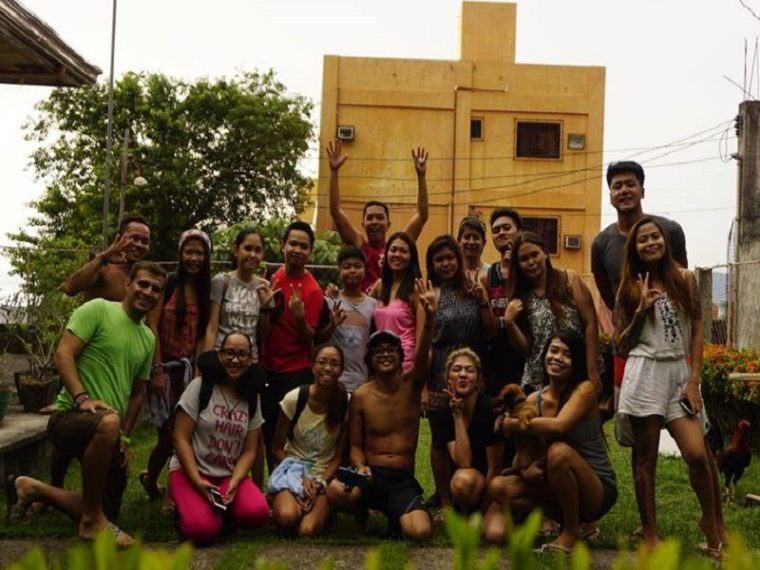
About the Writer
 Charley Mendoza is a freelance writer covering business, personal finance, and self-development. When she’s not stringing words, she’s either planning her next big adventure, or eating. Soon-to-be pro archer, figure skater, and licensed scuba diver, she has diverse and sometimes crazy goals–including owning a panda, and becoming a Jedi master. Follow @CharleyWrites on Twitter and Instagram for crazy pictures, foodie pics, freelancing tips, and everything to do with succeeding as a full-time freelance writer and traveler, aka #digitalnomad.
Charley Mendoza is a freelance writer covering business, personal finance, and self-development. When she’s not stringing words, she’s either planning her next big adventure, or eating. Soon-to-be pro archer, figure skater, and licensed scuba diver, she has diverse and sometimes crazy goals–including owning a panda, and becoming a Jedi master. Follow @CharleyWrites on Twitter and Instagram for crazy pictures, foodie pics, freelancing tips, and everything to do with succeeding as a full-time freelance writer and traveler, aka #digitalnomad.

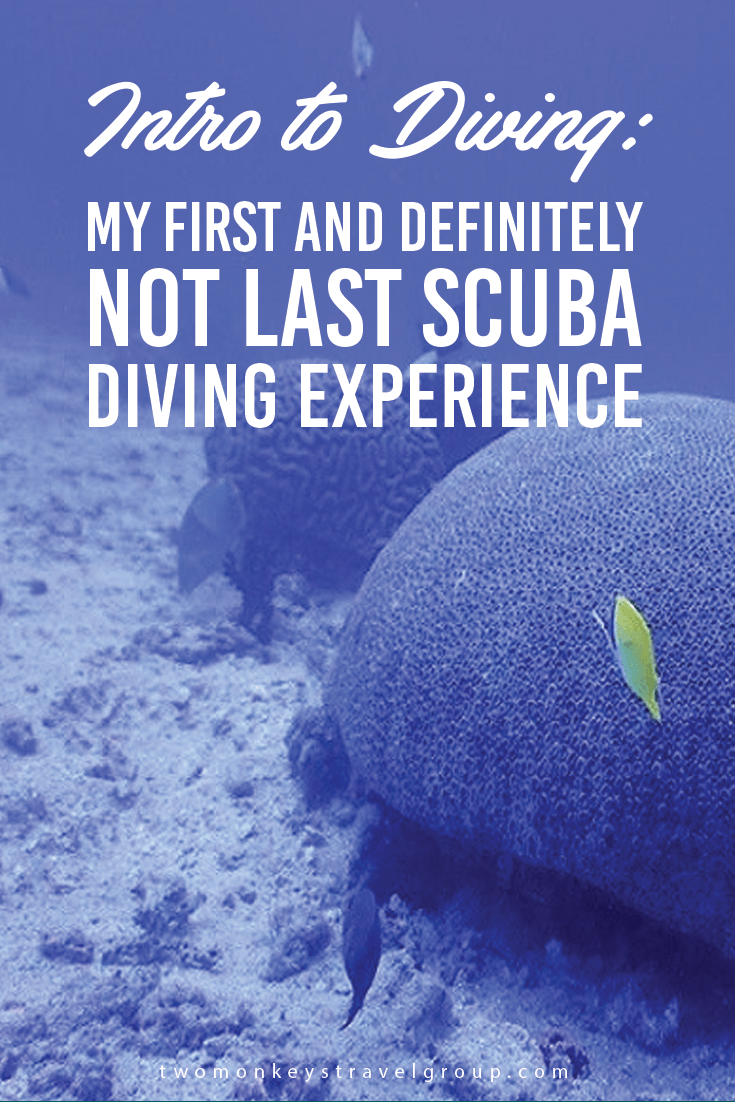
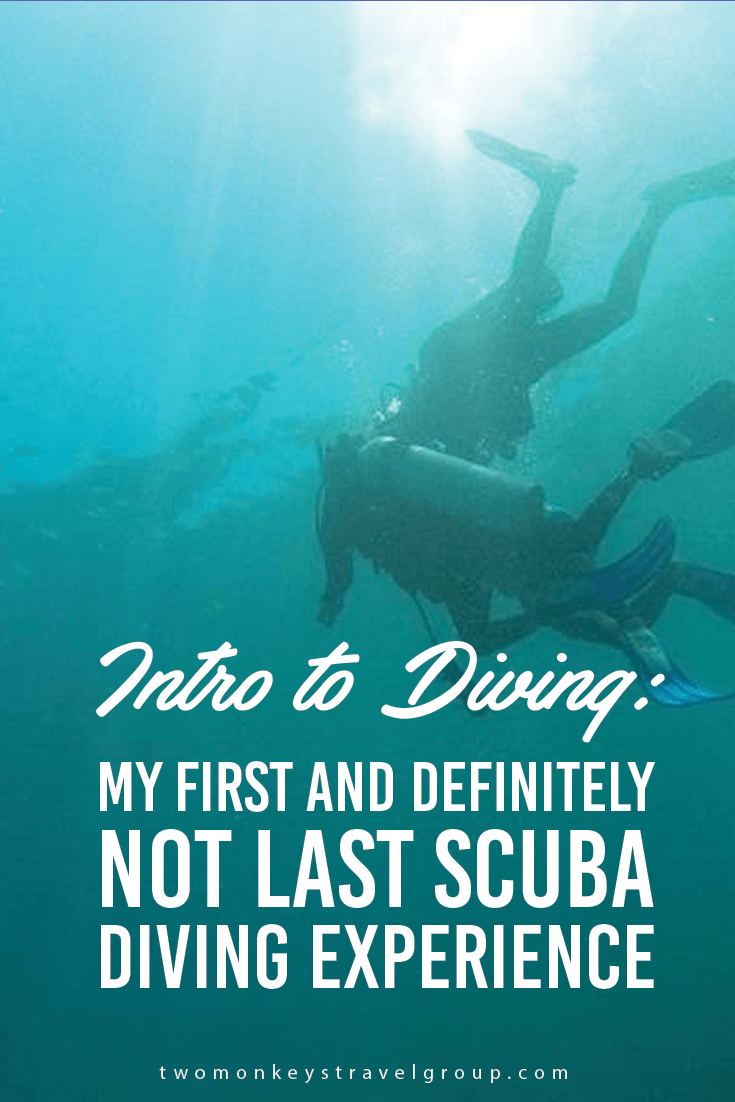
I’ve been looking for such an article like this and this the only one that answered all questions in my mind. Very helpful article. I am definitely going to try that. Anyway, I have a question. What company did you book a scuba lesson? If you have a link. Can you send 1 for me. Thank you. Very much appreciated.
My experience was pretty good. I visited along with my friends. The awesome part of my trip was scuba diving. It was an amazing experience and also scuba diving was too good I have enjoyed a lot and was a memorable experience, I would like to visit again whenever I got chance to visit Goa. thank u sea water sports.
Scuba diving is really an experienced.. seing the wonders under the sea… Thank you
Awesome post!
Loved reading your post.
Initially I also thought that scuba diving is difficult and scary of course, because I don’t know how to swim. But after doing it I want to do it again and again and again…
Hi,
This is an excellent article. Indeed it takes some getting used to when you need to rely on your mouth to breathe. The pain in the ears is also something that needs lots of adjustments. Otherwise, diving is a very fun activity!
We absolutely LOVE scuba diving. You describe it really well. I have to admit the very first time was a bit scary but totally worth it in the end.
Wow what a descriptive post which covered all the questions I had. You covered all the what if this went wrong scenarios I didn’t even think of too. I have never done scuba diving before due to not being a strong swimmer. After reading this, you have definitely made me want to give it a go. Thanks Ben
Hi Ben,
Glad you found this article useful. 🙂 I can swim but I’m not a good swimmer, too. It helps that the fins do all the work. Give scuba diving a go, I promise you won’t regret it.